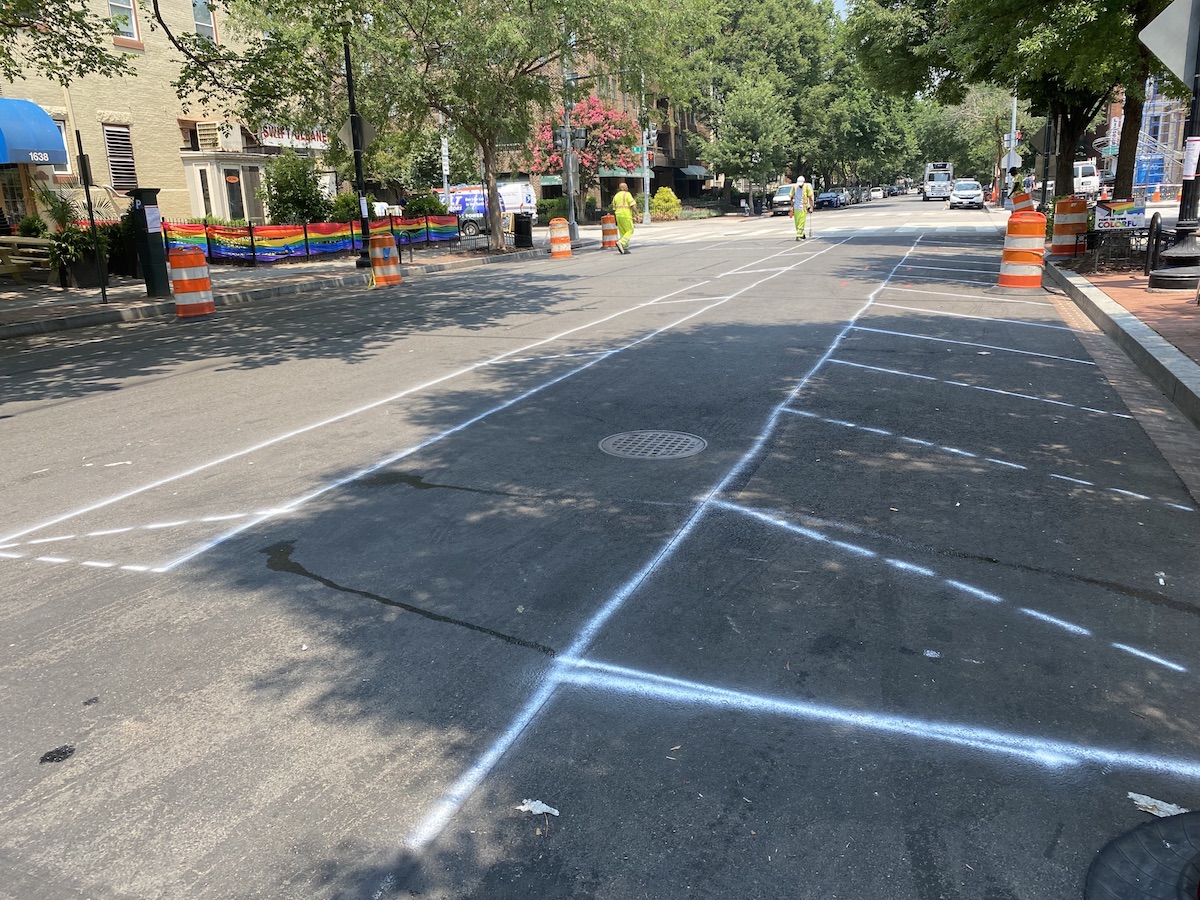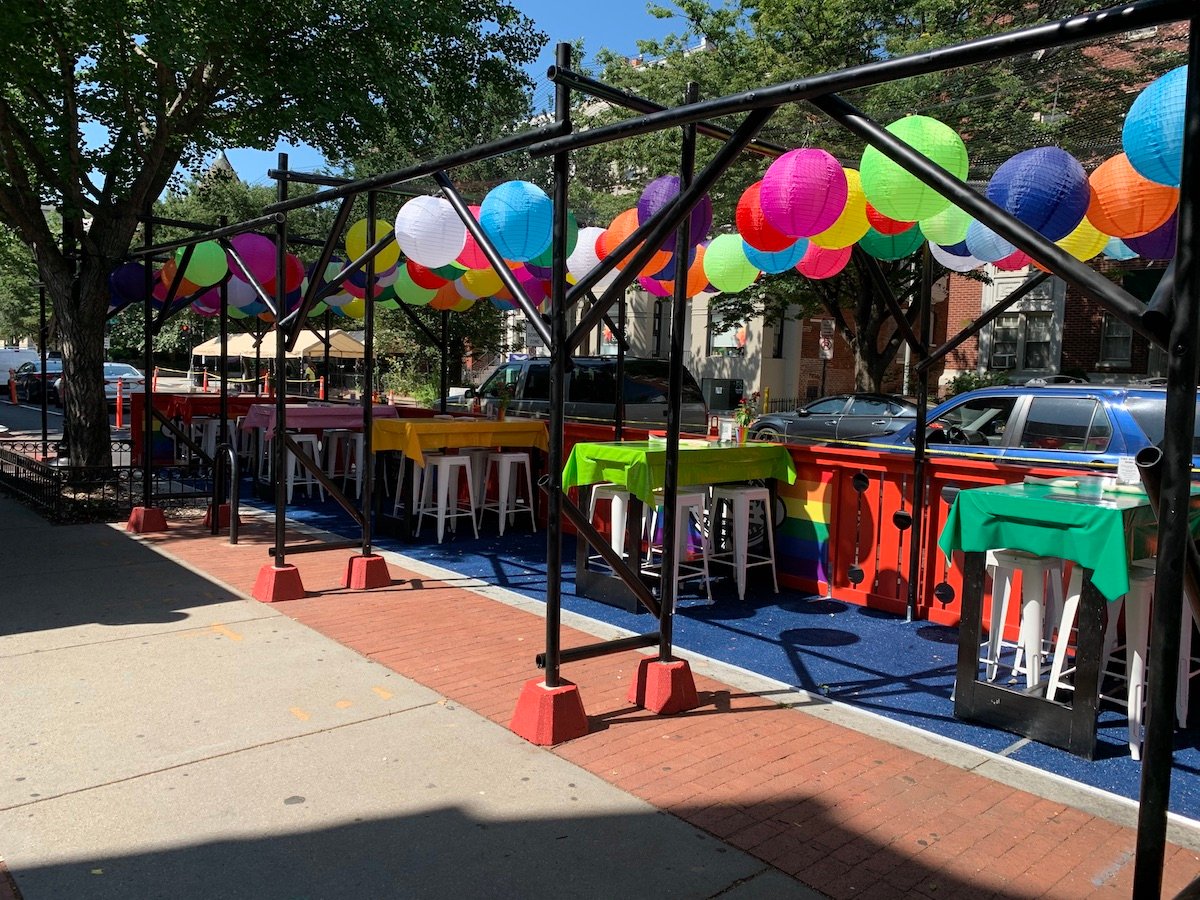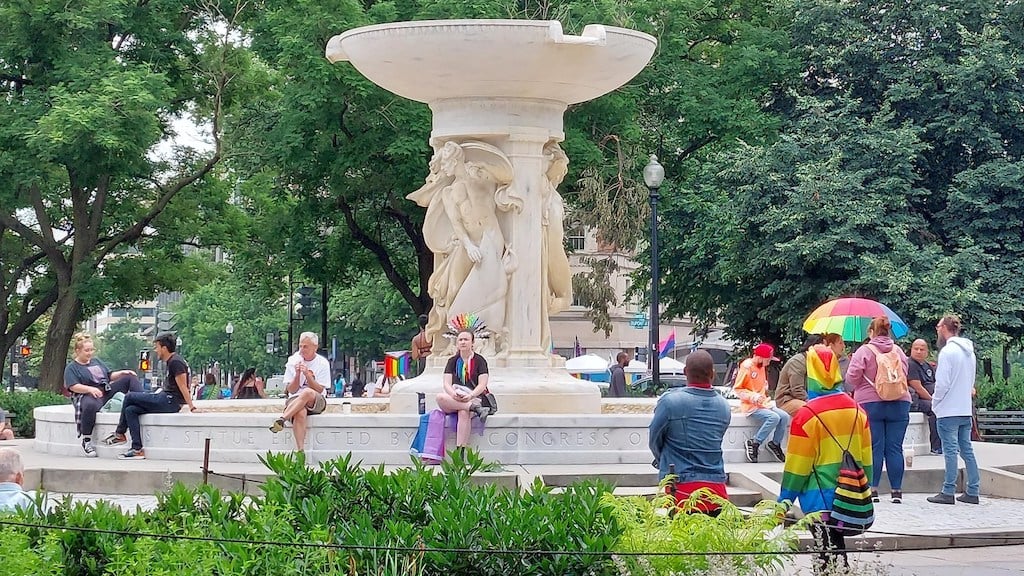Dupont Circle’s 17th Street, Northwest, corridor has become one of the most popular streatery destinations in DC since Mayor Muriel Bowser implemented the outdoor dining program in June of last year to help restaurants struggling in the pandemic. So it’s no surprise there was a public outcry when businesses began removing their in-street dining and drinking areas Tuesday, taking away wooden floorboards and semi-permanent walls hung with rainbow flags and flowers.
"17th Street now predominantly vacant of it eatery structures" https://t.co/5nferOXlTu pic.twitter.com/UEFcSz38Fy
— PoPville (@PoPville) July 7, 2021
Not to panic—they’re coming back, and many think, in a better and more permanent way than ever.
Former Dupont Circle ANC commissioner Randy Downs shared plans to revamp 17th Street, years in the making, that are moving forward over the next few weeks with the help of District Department of Transportation, city, and neighborhood officials. The outdoor dining structures have been temporarily removed to allow painting and paving for new bike lanes, loading and unloading areas, and the creation of a single one-way traffic lane. There’ll also be new, designated streatery zones—the first of their kind in a DC neighborhood. Restaurants such as Duke’s Grocery, Annie’s, the Commodore, and Floriana are already planning to rebuild elaborate outdoor dining areas when they’re given the green light.
Downs calls it “a model for the rest of the city.”

Currently businesses across the District are allowed to operate their registered streateries through the end of the year. But after that, the fate of the pandemic-born program is somewhat uncertain. Currently Mayor Muriel Bowser’s office is pushing new legislation in the Reopen DC Alcoholic Act that would, among many other things, allow bars and restaurants to operate streateries between May 1 and October 25 for a minimal one-time registration fee. According to a DDOT survey sent this March to more than 100 restaurants that are participating in the streatery program, 89 percent expressed “overwhelming support” a more permanent version. Many businesses have spent considerable sums of money constructing atmospheric, semi-permanent outdoor structures, such as Le Diplomate, whose custom-built “streetside chateaus” feature temperature control units and lighting.
Duke’s Grocery owner Daniel Kramer says the positive impact of streatery business at his DC restaurants has been “massive” during the pandemic.
“At some point we’ll have to decide—what’s more important, three cars sitting there [in parking lanes] and doing nothing, or 20 to 30 guests enjoying great food and company and supporting local businesses?,” says Kramer.
Floriana bar manager Dito Sevilla, whose elaborate Kamala Harris-themed streatery and holiday display garnered a visit from the VP herself, agreed that the program was a lifeline. Not just for the Italian restaurant, which he says “wouldn’t have survived without it,” but 17th Street itself, historically a center of LGBTQ life and culture in Washington.
“It really revitalized us. 17th Street has been a little sleepy for the past five or six years. Everything has moved east and north, the hipsters took over certain areas,” says Sevilla, who lives on the block. “We’re an old street in a lot of ways, and now I come out and it’s bustling and busy.”
Sevilla has more grand plans for the second iteration of the outdoor dining room, which he estimates will reopen in early August.
“I would call it an iconic theme,” he says.



















